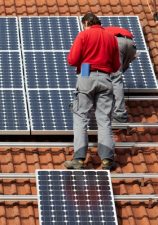 Events and frenetic discussion, both academic and activist in nature, have continued apace here at the 2nd Drylands and Desertification Conference here in Sde Boker, and I’ve taken an afternoon off to process the previous days proceedings. (You can see yesterday’s recap of the conference here.)
Events and frenetic discussion, both academic and activist in nature, have continued apace here at the 2nd Drylands and Desertification Conference here in Sde Boker, and I’ve taken an afternoon off to process the previous days proceedings. (You can see yesterday’s recap of the conference here.)
The theme of day 2 was titled ‘the role of vegetation in sustainable living within drylands,’ though this was a very loose umbrella for the variety of papers presented.
A critical theme emerging from this Internationally significant congregation of experts and interested parties is the effect of the creeping deserts upon human society – encompassing both desert dwellers and urban conorbations.
I was surprized to meet an Italian group here, but they tell me their government takes the increasing aridity of the south of the country, in Sicily, seriously. Some of the other participants have travelled from Ireland, Chad, Togo, Spain and Botswana to be here. A strand of today was the Jeffrey Cook Workshop in Desert Architecture and Urban Planning, which pulled together presentations from the Auroville Community in India, by S. Ayer-Guigan, an architect who works there; to research into microclimatic issues in the planning of a modern city, using examples as diverse as Phoenix, Arizona, Marrakech, and Beersheva.
BGU’s own Eyatar Erell (microclimatic issues) and Yodan Rofe (urban sustainability in deserts) presented these papers. It was particularly illuminating to hear new terms like ‘frontal density’ (what the wind would see and experience as it approaches buildings within a city) and ‘anthropogenic heat’ – the energy we consume and emit in our daily lives, through travel, house heating etc.
Comparing the maps and models of the traditional desert cities with planning for new cities or new suburbs through the prism of this kind of terminology and research is fascinating.
In other talks, Professor Rattan Lal of Ohio State University, addressed conference on the topic of carbon sequestration. Lal is seen as the godfather of sequestration, calling for reforestation worldwide immediately as just the first step in a long-term human approach to working with, not solving, the effects of climate change.
It was heartening to see that the mid-morning session on Climate Change in the Drylands, held in a large seminar room, and featuring papers from Israeli experts as well as from researchers from elsewhere around the Mediterranean, was packed with attendees, spilling out into the corridors.
While the prognosis of the effect of climate change upon deserts (& every other habitat on the planet) are gloomy, at least the will to understand it and offer solutions seems strong, as evidenced from this conference. Its not clear whether participants have been encouraged to offset their carbon emmissions from their journeys here, to this deep desert outpost, but there is a strong environmental awareness heard around the campus. Last night at an event in Mitzpe Ramon, we ate on corn starch compostable plates.
For me, the highlight of the day was an afternoon roundtable discussion with staff of the Blaustein Institute and some of the Jordanian students there, who are enrolled on the international studies programme.
The intended theme of the discussion was to have focussed on Middle Eastern Regional cooperation in Desertification research, but veered into how the students were dealing with cultural differences, and how they might use the professional research techniques back in Jordan, or elsewhere. Some of these students have been invited to guest post here on Green Prophet, so we look forward to hearing their Individual perspectives here soon.
General Mansour Abu Rashed has been particularly instrumental in facilitating environmental cooperation between Israel and Jordan, and he gave his view on the difficulties faced by green students within the Hashemite Kingdom who wish to study here, and how they can use their expertise particularly in the areas of water conservation, and solar technology.


